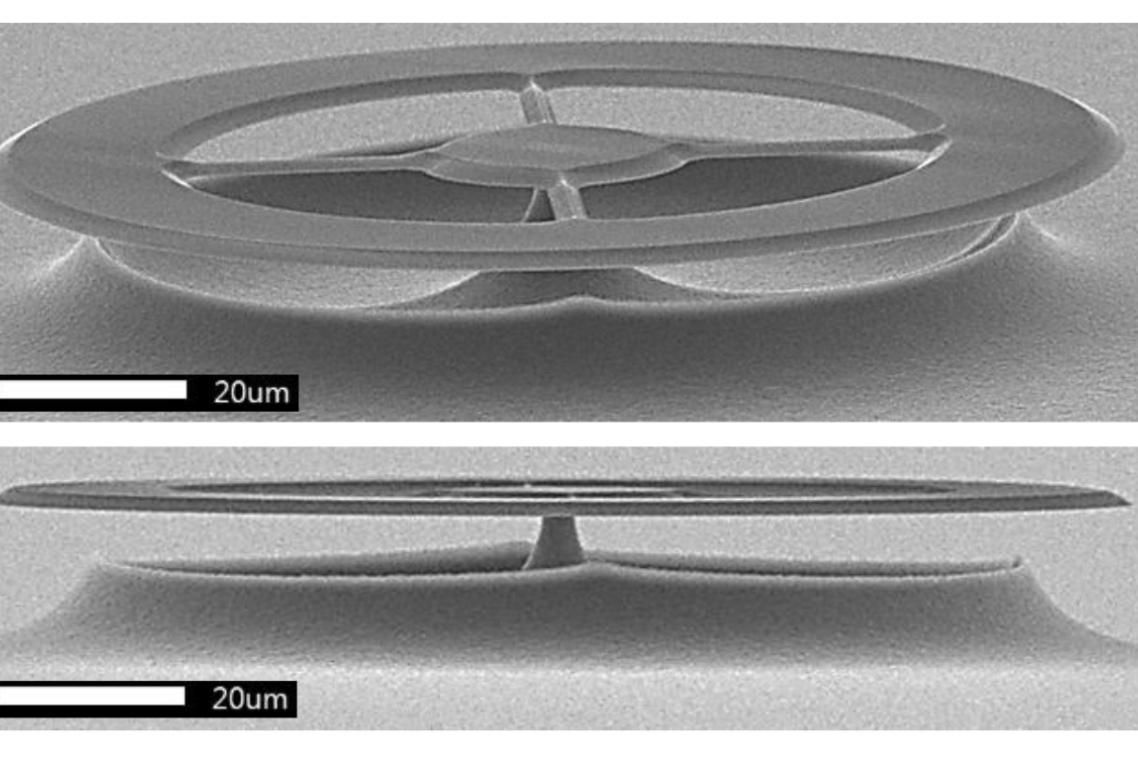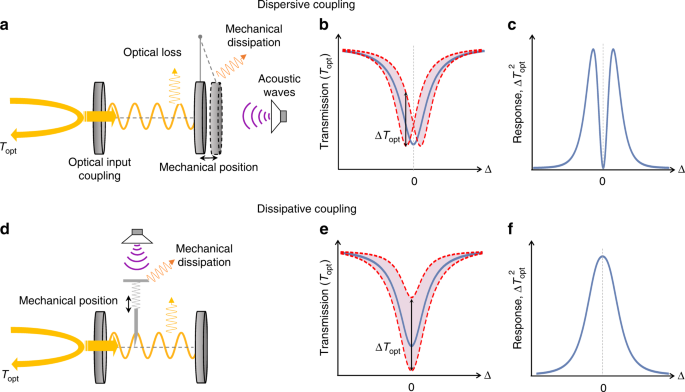2019/1/15 オーストラリア連邦クィーンズランド工科大学 (QUT)


・ QUT が、ナノファブリケーションとナノフォトニクスの両技術を組合せた、超高精度なオンチップ超音波センサーを開発。
・ 超音波はバイオ医療用の高解像度イメージングや水中の物体のソナーイメージング、ドローンのナビゲーション等、多くのアプリケーションにおいて不可欠。これらのアプリケーションの向上に資する、より小型で超高精度のセンサーを作製した。
・ 同超音波センサーは完ぺきに近い超音波検出器で、空気分子からの極微小なランダム力を検出する超高感度を有する。直径 1mm を下回るサイズで、細菌への重力のような、超音波の極微小な力の測定が可能となる。
・ 同センサー技術の超高精度により、将来的にバクテリアや細胞の発する音を聴きとれるようになれば、これらの生物システム機能に対する理解の向上が図れ、新しいアプリケーションが期待できると考える。
URL: https://www.uq.edu.au/news/article/2019/01/ultra-ultrasound-revolutionise-technology
(関連情報)
Nature Communications 掲載論文(フルテキスト)
Precision ultrasound sensing on a chip
URL: https://www.nature.com/articles/s41467-018-08038-4
<NEDO海外技術情報より>
Abstract
Ultrasound sensors have wide applications across science and technology. However, improved sensitivity is required for both miniaturisation and increased spatial resolution. Here, we introduce cavity optomechanical ultrasound sensing, where dual optical and mechanical resonances enhance the ultrasound signal. We achieve noise equivalent pressures of 8–300 μPa Hz−1/2 at kilohertz to megahertz frequencies in a microscale silicon-chip-based sensor with >120 dB dynamic range. The sensitivity far exceeds similar sensors that use an optical resonance alone and, normalised to the sensing area, surpasses previous air-coupled ultrasound sensors by several orders of magnitude. The noise floor is dominated by collisions from molecules in the gas within which the acoustic wave propagates. This approach to acoustic sensing could find applications ranging from biomedical diagnostics, to autonomous navigation, trace gas sensing, and scientific exploration of the metabolism-induced-vibrations of single cells.



